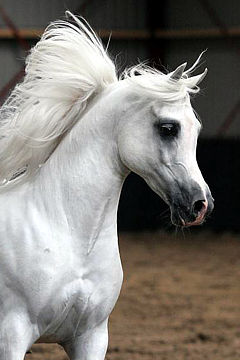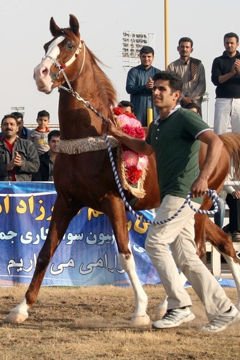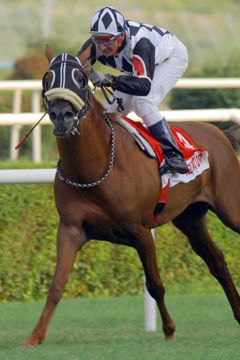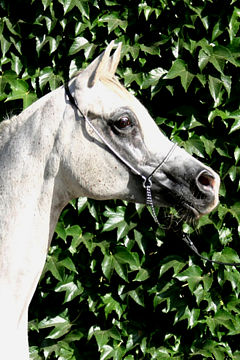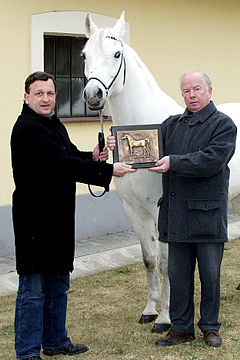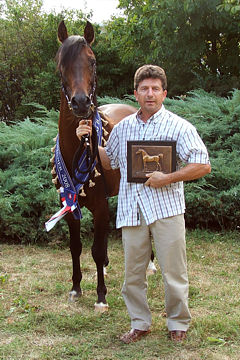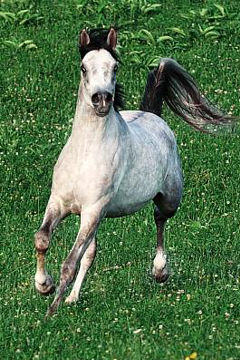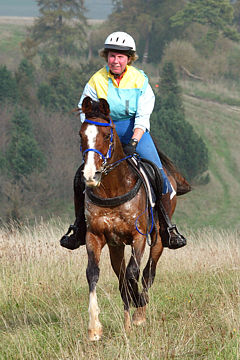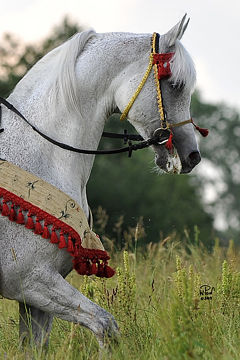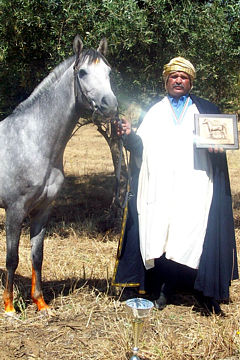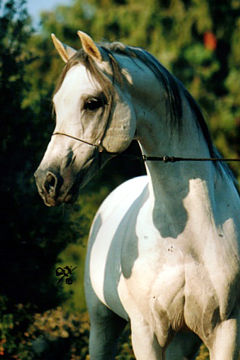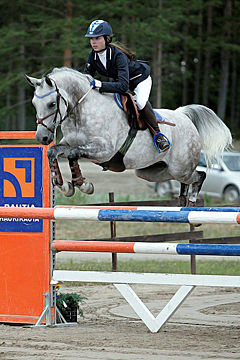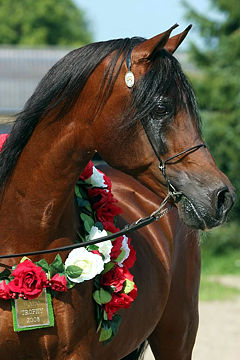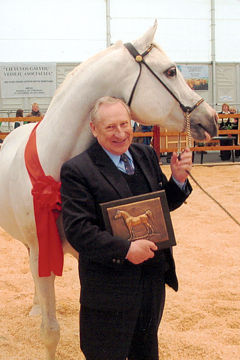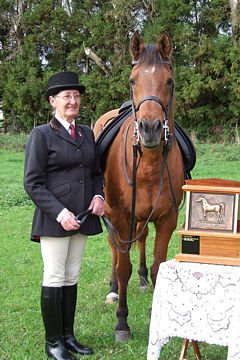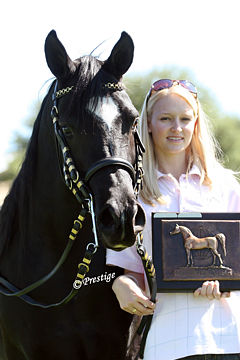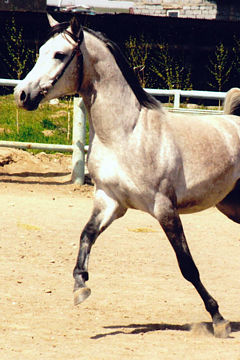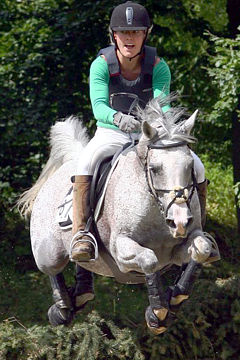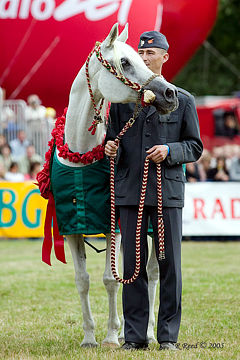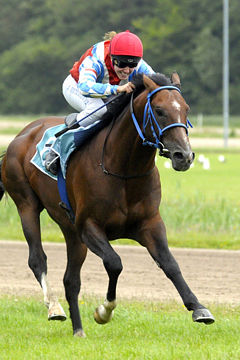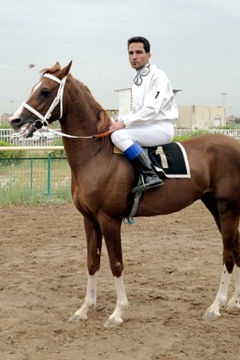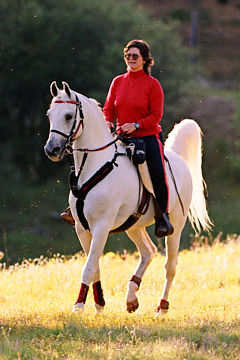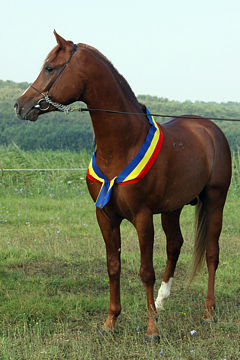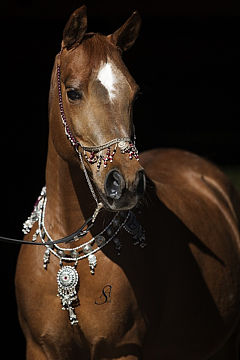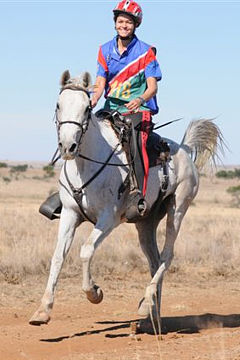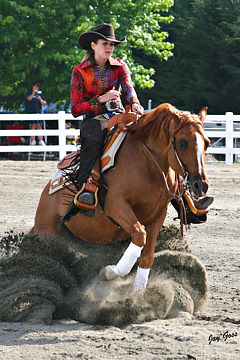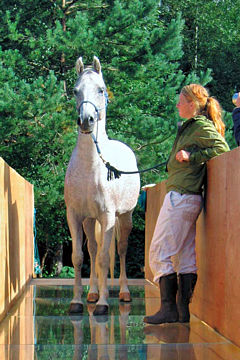
REPORT MADE AT THE 2025 WAHO CONFERENCE:
Gaofeng Yue, China: (with PowerPoint).
Dear Mr. Peter Pond, President of WAHO, dear WAHO Executive Committee members, Esteemed Delegates, Ladies and Gentlemen. I am Yu Wang, I am the Director of the International Affairs Department of the China Horse Industry Association. My co-delegate sitting next to me is Gaofeng Yue, Secretary General of the Association. Also with us here today are Mr. Zhang Kuo and Mrs. Xia Jing, representatives of the Association’s membership. Together we wish to sincerely thank His Highness Sheikh Mansour Bin Zayed Al Nahyan, and His Excellency Sheikh Zayed Bin Hamad Al Nahyan, and the Emirates Arabian Horse Society for their generous hosting of this Conference. We are very much looking forward to the days ahead, and to seeing more of your country and, of course, your Arabian horses.
On behalf of the China Horse Industry Association and the China Arabian Horse Association, I would like to report to WAHO and all our colleagues on the development achievements and important initiatives of the Arabian horse industry in China in recent years. I will start with our most significant achievements in Arabian Horse Breeding and Registration. First and foremost, we are very proud to have been accepted as a full Registering Authority Member of the World Arabian Horse Organization. With the support of WAHO, we officially published Volume One of the China Arabian Horse Stud Book in September 2024, which also coincided with the 90th anniversary of the first official recorded arrival of Arabian horses in China. We hereby express our sincere gratitude to the WAHO Office, particularly Miss Joanne Minter, for the substantial assistance in compiling the final version of our studbook. Without all of this help, we would definitely have required more time and effort to complete it.
In recent years, the interest of our owners in Arabian horses has grown very fast, with a high level of imports. As a result, the scale of Arabian horse breeding in China has continued to expand. Our data shows that the annual registration of foals before 2020 was only 30, which increased to 34 in 2021, 101 in 2022, 160 in 2023, and further increased to 175 in 2024. This year we expect that the number will be over 200. This increase is attributed to the steady economic development of China and the deep recognition of Arabian horses and equine culture by horse owners. Embryo transfer technology is becoming increasingly popular in China, with each mare allowed to have 5 embryo transfers per year, and the technology is mature and the operation is more standardized.
At the same time, to improve the management system, under the guidance of the Ministry of Agriculture and Rural Affairs of China, relying on the online platform “China Stud Book Network” (www.studbook.cn), we have achieved real-time updates and efficient management of registration data, ensuring the transparency and accuracy of pedigree tracing, DNA testing, and microchip implantation. We will have an online stud book starting this year, it should be ready very soon, with an English interface available. We thank the Hong Kong Jockey Club and Weatherbys.
In terms of the promotion of the breed and the development of Arabian horse events in our country, China’s Arabian horse event system is becoming increasingly diversified, covering horse shows, racing, endurance, and traditional ethnic events. More registered horses are participating in competitions of all sizes. Event organizers include official Institutions and industry Associations. In addition, we systematically disseminate the history and culture of Arabian horses and breeding knowledge through Chinese social media platforms such as WeChat official accounts and Douyin, the Tik Tok China version, and regularly hold online and offline training sessions covering core areas such as WAHO rule interpretation, horse breeding, and horse health.
We are in compliance with WAHO standards and registration rules, using five-generation pedigree tracing, genetic testing, microchips and passports, to comprehensively ensure the inheritance of purebred bloodlines.
In 2024, Chinese horse owner Mr. Wang Xin won the WAHO Trophy with his home-bred Arabian mare, Xi Wa Na. This has played a positive demonstration role in the breeding of excellent purebred Arabian horses in China. In the future, we will continue to deepen international exchanges and promote the diverse value development of Arabian horses in China’s culture, sports, and public welfare fields. Ladies and Gentlemen, in 2025, this year, the China Horse Industry Association will cooperate with the Emirates Arabian Horse Society to hold the Emirates Arabian Horse Global Cup (EAHGC) in China in the beautiful coastal city of Qingdao, from July 17th to 18th. This is the first time that the EAHGC has come to China, and Chinese Arabian horse owners, breeders, and enthusiasts are delighted. Here, we would like to express our sincere gratitude to His Highness Sheikh Mansour bin Zayed Al Nahyan, Vice President of the UAE, and the Emirates Arabian Horse Society for their generous support. Currently, China has implemented visa-free policies for many countries, making it very easy to travel to China. We sincerely invite Arabian horse lovers from all over the world to participate in this event, enjoy the beautiful scenery of China, watch the elegant and beautiful Chinese Arabian horses, and learn about the rapidly developing and rising Chinese Arabian horse community.
The China Horse Industry Association, as the only Association approved by the Ministry of Agriculture and Rural Affairs of China to be responsible for the registration of various horse breeds including Arabian horses, is willing to continue to promote the breeding, registration, and organization of various events for purebred Arabian horses in China with the support of the WAHO and its Members. We have had a lot of support from WAHO Members since we started our journey to become a full WAHO Registering Authority Member, in particular from the late Debbie Fuentes from the Arabian Horse Association of America. We very much appreciate also all the support from the WAHO Office in helping us become a part of the WAHO family.
We believe that the Arabian horse industry in China will surely become the most attractive and potential new frontier in the global Arabian horse landscape. The rapidly developing Chinese Arabian horse industry contains huge opportunities, and we are willing to work hand in hand with global partners to safeguard pure bloodlines, to embrace innovative opportunities with openness and ingenuity, and jointly write a new chapter in the development of Arabian horses in China and the world. This concludes our report. Thank you for your attention.
REPORT MADE AT THE 2019 WAHO CONFERENCE:
Dr. Wang Zhenshan, China: Distinguished President Mr. Peter Pond, Members of the Executive Committee, Delegates, ladies and gentlemen, good afternoon. My name is Wang Zhenshan, Secretary General of the China Stud Book for Thoroughbreds and for the China Arabian Horse Association.
First of all, I would like to make a brief summary on Arabian horses in China. On October 13th 2017, the China Arabian Horse Association was officially established. On August 1st 2018 the WAHO booklet “Requirements for establishing and keeping a stud book incorporating minimum requirements for the use of artificial insemination and embryo transfer” were translated into Chinese.
On August 5th 2018, China’s first Arabian horse Show was held in Beijing, hosted by the China Arabian Horse Association. There are several endurance races held in China. Over the past two years we have worked hard on the investigations on Arabian horses in China, according to our statistics there are more than 270 Arabian horses in China, mostly imported horses, mostly from America and Europe. In the last two years we have imported 100 Arabian horses from Tersk Stud Farm in Russia, but we didn’t yet have the export certificates. Among these 270 Arabian horses, 93 horses have export certificates kept in the WAHO office. But the actual number of Arabian horses in China may be more than 270, because it is hard to find where these horses are located because we haven’t had the registry for a long time, to register them. Also the horses are often re-sold several times and it can be very difficult to find where the horses are now located. We have taken blood samples from 38 Arabian horses for DNA testing and drawn the markings and made the descriptions.
We compiled the Chinese Arabian Horse registration rules in accordance with the requirements of the WAHO. We have also completed the design of the registration certificate and passport of the Arabian horse. Our DNA testing laboratory is accorded rank one by the ISAG, we are ready to start running the China Stud Book. Last year the gift of an Arabian horse from the United Arab Emirates to the President of China has greatly increased the Chinese people’s love and interest in the Arabian horses.
Finally, I would like to express my sincere thanks to Miss Katrina Murray, Executive Secretary of WAHO and to Mrs. Debbie Fuentes of the Arabian Horse Association of America for their kind help and guidance. Thank you very much for your attention.
MEMBER REPORT FROM 2017 CONFERENCE:
Gaofeng Yue, China: Dear Mr. President, Members of the Executive Committee, Delegates, ladies and gentlemen, good afternoon. On behalf of China Horse Industry Association, also called CHIA, I would like to express our sincere gratitude to His Majesty the King and WAHO for their warm welcome. My name is Gaofeng Yue and I am the Secretary-General. I come here with Dr. Zhenshan Wang, the Secretary-General of the China Stud book Committee and Miss Rebecca Dai, the Director of International Affairs of CHIA; and some important members of CHIA group. This is our first time at a WAHO Conference and we are proud of being here, representing China as the newest Applying Member of the international WAHO family. I would now like to give you some background history and stories about the Arabian horse in China.
Over the past ten decades, generally acclaimed as an excellent breed, the Arabian horse has made very good impressions on Chinese horse owners. Historically, the Arabian horse has been introduced into China for many times. According to legend the prophet Mohammed’s friend Omar, leading his wife and a group of forty horsemen riding Arabian horses, arrived in Yili region of Xinjiang, China. After receiving the blood of these Arabian horses, the Yili horse as a breed was improved greatly, that’s why the two breeds share some common features.
In September 1934, the ten Arabian horses imported from the British company called John Holden were soon kept in Jurong Stud farm after their arrival in Shanghai. This was the first time for Arabian horse importation. It is interesting that a total of 11 Arabian horses, instead of 10, were imported according to the record, we thus surmise that the one-year old colt name “George” was most likely born shortly before or during the transport. In the same year, the Guangxi province also imported 3 Arabian stallions from India.
As one of the ancient breeds, the Arabian horse has good conformation, elegant and beautiful, it has strong adaptability to the environment, hardy and easy to keep. In the spring of 1937, in order to improve the performance of military horses, delegates from the Jurong Stud Farm, China went to Iraq to officially buy Arabian horses. A total of 23 Arabian horses were imported to China in 1937. The Arabian horses imported in both 1934 and 1937 from UK, India and Iraq were kept in Jurong Stud Farm. However, due to the outbreak of the Anti-Japanese war in 1937, the stud farm was moved to Qing Zhen county of Guizhou province in October of 1938, then called Qing Zhen Stud Farm. Since 1949, Qing Zhen stud farm was transformed into a military one. The number of Arabian horses bred and improved there once reached 700. Now, there are still progenies of Arabian horse cross-breeds in the southwest area of China.
In 1993 a Japanese friend, Mr. Ishikawa Ryonami, presented six Arabian horses as gifts, two stallions and four mares to the vice-chairman of the Standing Committee of the National People’s Congress. In 1995, Mr. Ishikawa again sent twelve Arabian horses, six stallions and six mares. All the above 18 horses were from Kentucky, USA. At the same time, the stallions were also used to improve local breeds, which made some achievements. As a result, the purebred Arabian stock was increased to a considerable number.
In May 2015, the President of Kyrgyzstan presented a grey Arabian stallion name Czar Dam to President Xi Jinping. Czar Dam was born in Poland, by Poganin out of Contra. It is believed that this national gift horse has many excellent qualities, inherited from his well-known ancestors, and will enhance the standard of Arabian breeding in China in the future.
The Arabian Horse Association of America was invited by CHIA to hold a symposium on Arabian horses in Beijing on January 30, 2016. At this time, Miss Debbie Fuentes suggested CHIA to join WAHO. We would like to thank her for all her assistance and for so generously making great efforts to educate our owners and breeders.
In the last ten decades many Arabian horses have been imported from different countries into China. Today we estimate that China has a stock of over 200 living Arabian horses, all of them either imported from WAHO approved studbooks, or their direct progeny. Under the guidance of CHIA, the China Arabian Horse Association, besides making great efforts to become a Registering Authority Member of WAHO, will from now on maintain the registry and studbooks, and popularization for Arabian horses in China. Our first task will be to register every living Arabian in our country for inclusion in our first Arabian Studbook in China which, with the help of WAHO and of our Registrar colleagues around the world, we intend to have ready to submit for approval within the next year.
China has a splendid horse culture of 5,000 years. Today, nearly 6 million horses still live in our country with its area of 9,600,000 square kilometres. As the world’s second largest economy with a population of 1.4 billion, China has more than 1,000 equestrian clubs, stud farms and racetracks included across the country with over 10 million faithful horse lovers. As a result, the horse industry in China has won unanimous support of the government as well as the public, and its rapid development has attracted attention from all over the world. We strongly believe that the excellent genes and culture of the Arabian horses will be preserved and spread in China, thus making our special contributions to the prosperity of this noble breed. I wish all of you enjoy a good health and be happy forever. Welcome to China and welcome to CHIA. Thank you for your attention. (Applause)

